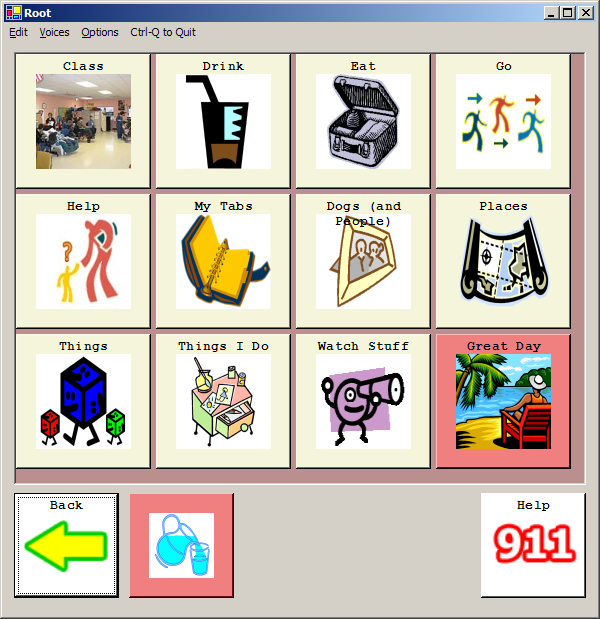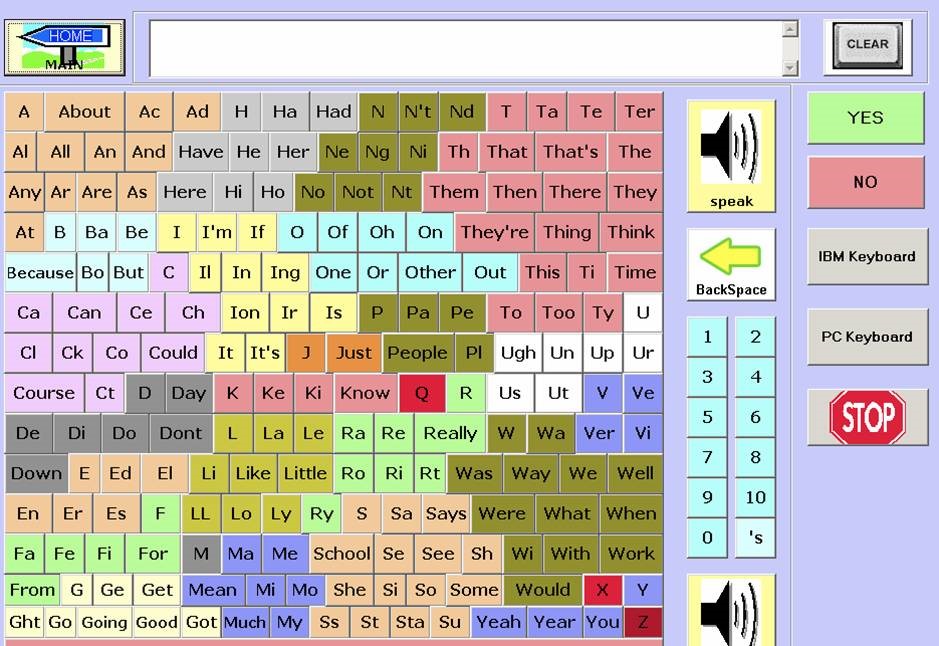
Keyboard
mode will take advantage of context-awareness, phrase completion, and an
evolving intelligence that will prepare responses in anticipation of choice, in
order to make the device easier to use over time, for individuals with gross
and fine motor impairments.
The
communications device will be a readily available laptop computer with
touch-screen, joystick, trackball, or other input capability, and simple audio
and speaker output. Software will serve to translate simple selection into
speech.
In
menu mode, in order for the device to be used by the severely handicapped, it
must contain an “auto scan” mode, in which menu choices are highlighted
sequentially, the current choice signaled by a spoken audio prompt, and a
selection is made by a single switch. All labels and buttons must be
configurable for phrase to be spoken, button label, and button picture (for
those who cannot read). It must include an on screen keyboard mode for the
construction of words and phrases.
Once
and for all, and after many attempts, we need a final, workable solution. It
needs to include these components”
§ Configurable voice
§ Separate voices on separate
channels (one for speaking, one quiet from prompting)
§ Easily configurable,
pre-programmed menus: colors, pictures, phrases
§ A soft keyboard mode to
build new phrases
§ Phrase completion, word
completion, content prediction
§ Modern-looking buttons and
GUI
§ Single switch based auto
scan, with visual and audio queues
§ The ability to add phrases
and pictures from a file (add them but not replace what is there).
Here’s
a sample menu screen. Yours should look much more modern than this.

Here’s
a sample keyboard. Again, this is primitive.
